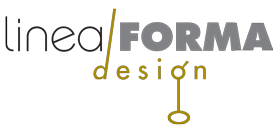Recently, I wrote about the process of disruptive innovation. A disruptive innovation creates a new market and value network and eventually disrupts an existing market and value network, displacing established market leaders and alliances. That same type of thinking is also being applied on a human level, using a method called “design thinking”. I will delve more into these two related topics in future posts and invite your comments, questions and insights.
“Design thinking is a human-centered approach to innovation that draws from the designer’s toolkit to integrate the needs of people, the possibilities of technology, and the requirements for business success.” —Tim Brown, president and CEO of global design company IDEO, and author of the blog “Design Thinking”. (On a side note, I have followed his story since he and the late Bill Moggridge started IDEO in 1991. I met Moggridge in my office in early 1982 while he was working on the first GRiD Compass laptop computer design, and became an immediate admirer of him and his work.)
Design thinking is a deeply human process that taps into abilities we all have but get overlooked by more conventional problem-solving practices. It relies on our ability to be intuitive, to recognize patterns, to construct ideas that are emotionally meaningful as well as functional, and to express ourselves through means beyond words or symbols. Nobody wants to run an organization on feeling, intuition, and inspiration, but an over-reliance on the rational and the analytical can be just as risky. Design thinking provides an integrated third way.
Dr. Bernard Roth, a prominent Stanford engineering professor, met many engineers in the Silicon Valley back in the 1960s, who worked for big companies such as Hewlett-Packard, and had dreams of starting their own companies. People just talked about it, and nothing happened. So he started teaching a class at Stanford in which each student had to choose a project having to do with their own life—writing a cookbook, building a robot, running a marathon—the only requirement was that the project was deeply personal. Students had to challenge their assumptions and automatic thinking to open themselves to new possibilities: the essence of design thinking. After 40 years teaching that class at Stanford, he now, as Academic Director, teaches it at one of the world’s leading centers for innovation, the Hasso Plattner Institute of Design at Stanford (d.school), which he co-founded in 2004 with entrepreneur George Kembel and Stanford mechanical engineering professor/IDEO co-founder David Kelley (who coined the term ‘design thinking’).
“Design thinking on the highest level is a way of reframing the way you look at the world and deal with issues, and the main thing is this idea of empathy,” Dr. Roth says. “If you have tried something and it hasn’t worked, then you’re working on the wrong problem…we are all capable of reinvention.”
Recommended reading on the subject of design thinking:
I find Bernard Roth’s book, “The Achievement Habit” inspirational in looking at design projects in a new way. It’s having an impact on my design/engineering of a current project I’ll be discussing in a later post.
I’m currently reading designer/teacher Rob Curedale’s book “Design Thinking Pocket Guide”. Rob is currently an Adjunct Professor at Art Center College of Design. He designed and managed over 1,000 products and experiences as a consultant and in-house design leader for the world’s most respected brands over the last 30+ years, and is founder and manager of LinkedIn’s Design Community, of which I am a member.
Old dog—new tricks! Stay tuned.
Share this:

